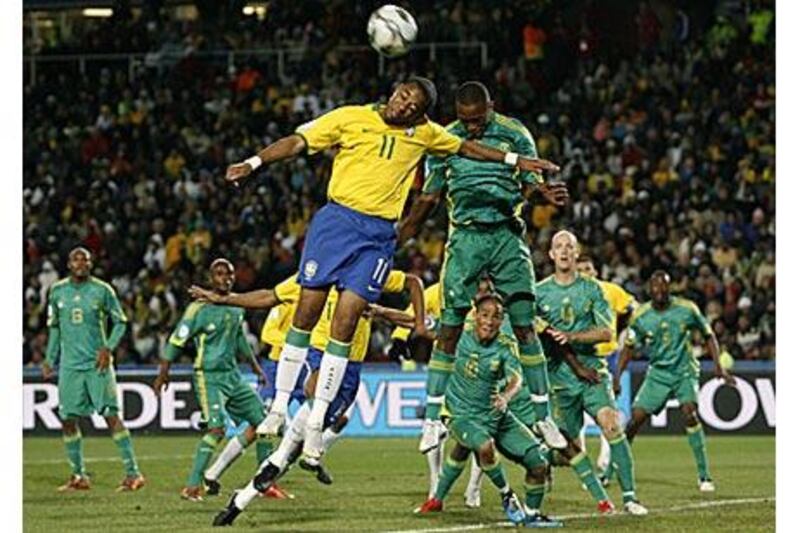JOHANNESBURG // Are any national side so burdened by their history as Brazil? It is not enough just to win: they must do so while invoking the immortal spirit of 1970 and fulfilling every cliche of samba style. Dunga has already won the Cope America; this afternoon he will add the Confederations Cup if his side beat the USA in the final. They may have scored 11 goals in four games to reach this stage, and outplayed Italy, the world champions, yet still the Brazilian media - and thus, presumably the public - are not happy.
The Cruzeiro midfielder Ramires, in particular, has been criticised, with suggestions that he should be dropped for Dani Alves, who came off the bench to score the winner in the semi-final against South Africa with an 88th-minute free-kick. If Alves is not good enough to displace Maicon, the logic runs, space should be found for elsewhere. Yet Ramires has had an excellent tournament, performing with a rare combination of verve and discipline, providing a much-needed counterbalance to the more overtly creative talents of Robinho on the left of Brazil's diagonal 4-2-3-1.
It is Robinho who presents opponents with the greatest tactical conundrum. He plays in an odd three-quarter position, neither forward nor midfielder, neither central nor wide, and thus falls into the sphere of neither right-back nor centre-back to mark. If a defensive midfielder is assigned to pick him up, that draws resources from the other flank, where both Ramires and Maicon can attack from deep.
South Africa restricted Brazil in the semi-final by taking the game to them, and playing the game largely in Brazil's half; the reverse of how the USA frustrated Spain in their semi-final, which was to sit deep and deny Spain's playmakers space to thread passes. Brazil, it must be expected, will be rather better than they were in the semi-final. In the wake of their astonishing victory over Italy, Brazil may have been underwhelmed by the prospect of a game against dogged minnows. Yet, as Gilberto Silva hinted, South Africa's man-marking had unsettled them.
That is something for the USA to consider. Certainly to sacrifice the wings and allow their opponents to cross would be a far riskier policy against Brazil than it was against Spain and, besides, USA's centre will be weakened by the absence of Michael Bradley, the third American to be sent off. Charlie Davies may again use his pace to try to get in behind Maicon, as he did against Sergio Ramos in the semi-final; he may not have created much from there, but he successfully disrupted the Spanish right as Ramos became reluctant to advance.
Such tests, of course, are precisely what the Confederations Cup is all about; Dunga is effectively road-testing the system that has developed over the past few months. As Kaka said: "We are only thinking about preparing for the World Cup." sports@thenational.ae





